Leonardo da Vinci is considered one of the greatest artists and inventors ever. He is one of my all-time favorite artists.
Leonardo da Vinci’s drawings have fascinated generations, capturing beauty and awe in every medium he explored. Leonardo’s drawings capture something special about the artistic world that still captivates us today, from anatomy sketches to landscape studies to sketches from nature. Many Leonardo da Vinci drawings are considered iconic works of art.
Table of Contents
- Leonardo Da Vinci’s 7 Most Important Drawings
- Vitruvian Man (c. 1490) By Leonardo da Vinci
- The Head of Leda (c. 1506-1508) By Leonardo da Vinci
- The Study of Hands (c. 1480) By Leonardo da Vinci
- The Deluge (c. 1517-1518) By Leonardo da Vinci
- The Head of St. Philip (c. 1495-1498) By Leonardo da Vinci
- The Study of Horses (c. 1490-1495) By Leonardo da Vinci
- The Study of the Heart (c. 1510-1511) By Leonardo da Vinci
- Frequently Asked Questions
- Related Questions
Leonardo Da Vinci’s 7 Most Important Drawings
When most people think about Leonardo da Vinci, we think of his many famous paintings, such as the Mona Lisa or The Last Supper. But Leonardo da Vinci also left us with some fantastic drawings, studies, and sketches.
As Leonardo da Vinci was such a great artist, it was difficult to decide which drawings were his top works of art. This is because Leonardo da Vinci’s drawings and sketches showcase his immense talent and serve as valuable insights into his creative process.
Here is our pick of the top seven unique drawings by Leonardo da Vinci, along with brief descriptions, approximate year produced, and where they can be found in case you want to view them in person:
Vitruvian Man (c. 1490) By Leonardo da Vinci
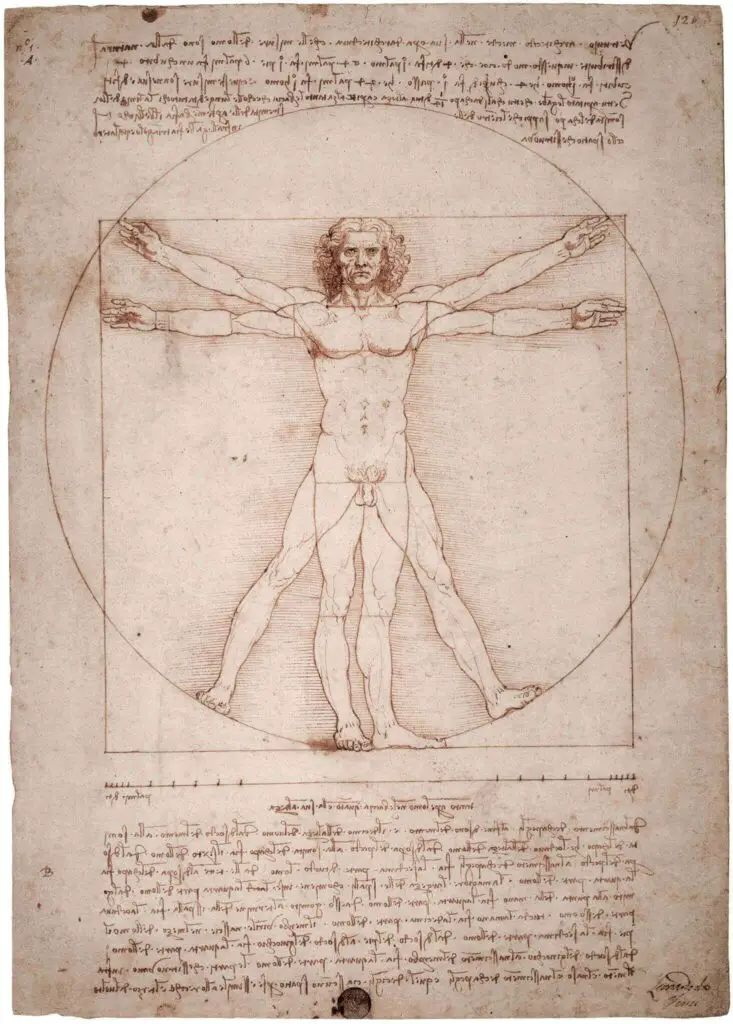
Found in the Gallerie dell’Accademia in Venice, Italy, this famous drawing depicts a male figure in two superimposed positions, inscribed within a circle and square. It illustrates Leonardo’s exploration of proportion and the human form.
The Vitruvian Man is perhaps Leonardo Da Vinci’s most famous drawing; this drawing is still used today in art, media, and print.
The Head of Leda (c. 1506-1508) By Leonardo da Vinci
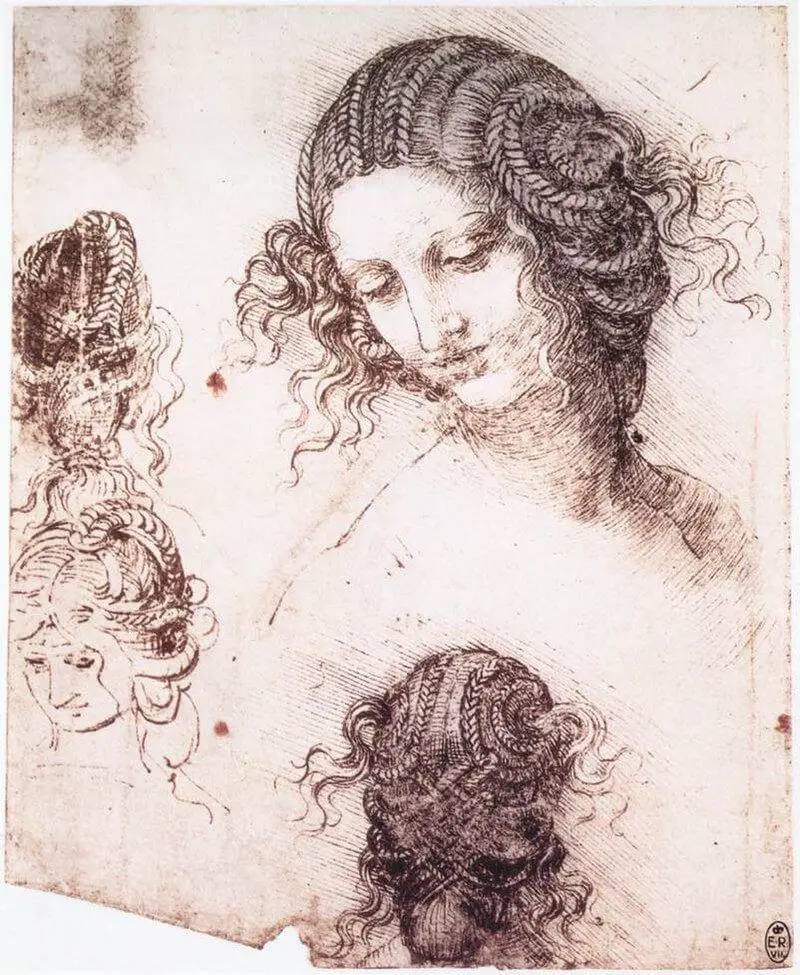
Preserved in the Biblioteca Reale in Turin, Italy, this drawing studies the head of Leda, the mythological figure. It displays Leonardo’s exceptional ability to capture intricate details and emotions in his portraiture.
The Study of Hands (c. 1480) By Leonardo da Vinci
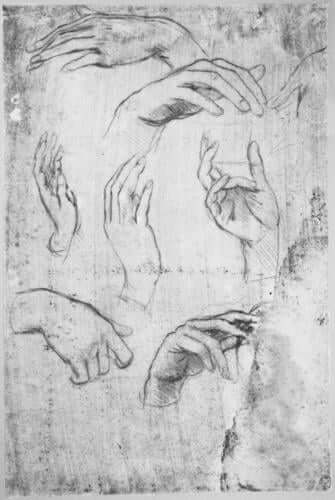
The Study of the Hands is at the Royal Collection Trust, England. At first, these hands did not show up on paper, but when placed under UV light, they could see the study of the hands. It is an important drawing as it shows Leondardo’s importance in studying every part and aspect of the human body.
The Deluge (c. 1517-1518) By Leonardo da Vinci
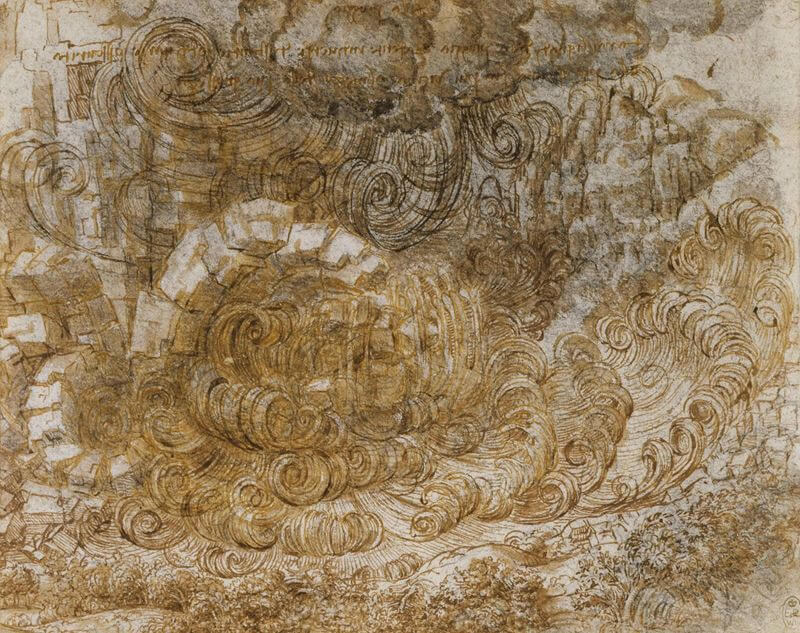
Housed in the Royal Library of Windsor Castle, England, this drawing depicts a chaotic scene of a deluge or flood. It reflects Leonardo’s interest in the forces of nature and his ability to capture movement and dramatic tension.
The Head of St. Philip (c. 1495-1498) By Leonardo da Vinci

Currently held in the Ashmolean Museum in Oxford, England, this drawing is a study of the head of Saint Philip, one of the twelve apostles. It showcases Leonardo’s skill in capturing the subtle nuances of facial expressions.
The Study of Horses (c. 1490-1495) By Leonardo da Vinci
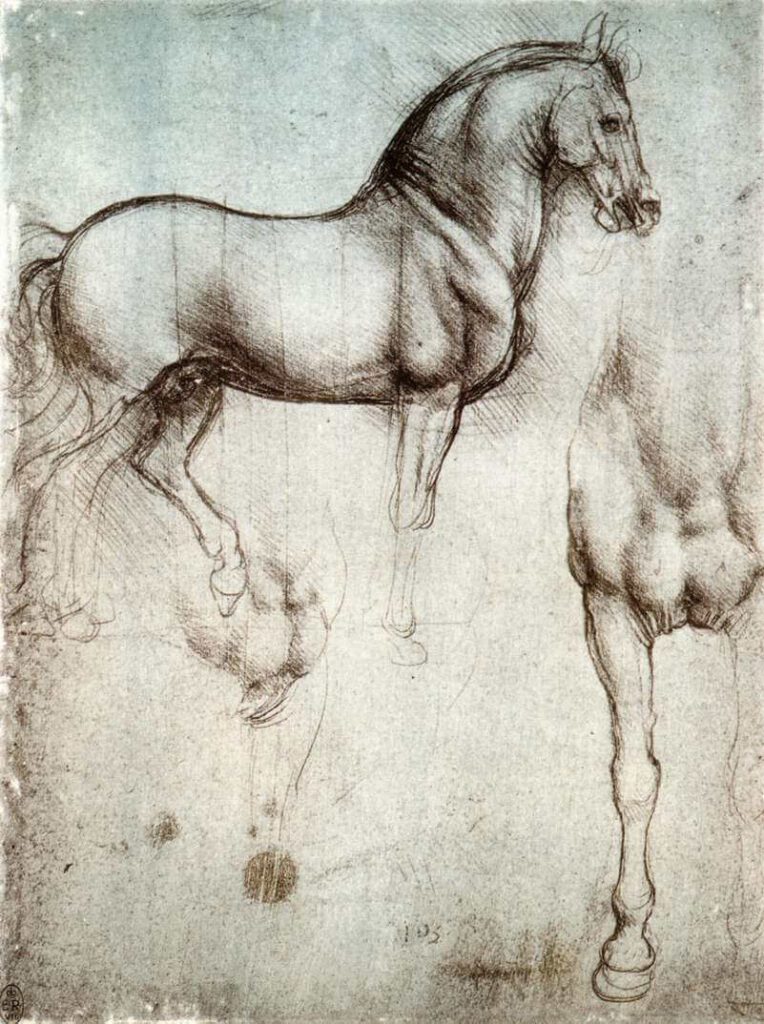
Located in the Royal Library of Turin, Italy, this drawing exemplifies Leonardo’s passion for understanding and capturing the essence of animals. It showcases his detailed observation of horse anatomy and movement.
The Study of the Heart (c. 1510-1511) By Leonardo da Vinci
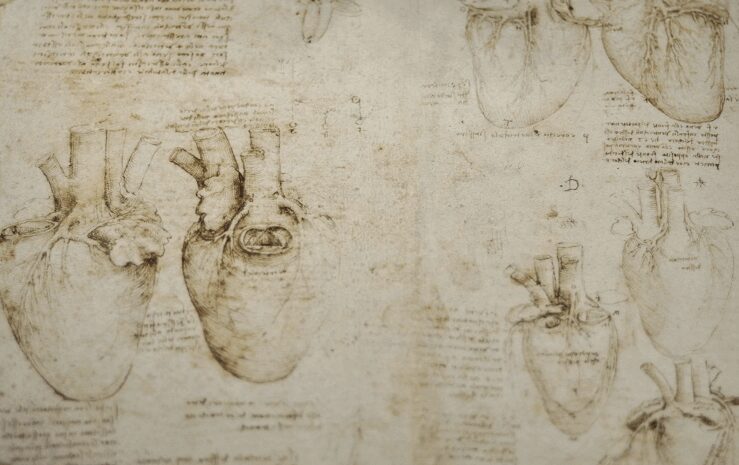
This drawing showcases Leonardo’s anatomical studies, preserved in the Royal Collection Trust, Windsor Castle, England. It provides an intricate and accurate representation of the human heart, demonstrating his deep curiosity about the human body.
These seven drawings highlight Leonardo da Vinci’s diverse subjects, from anatomy to nature to people. They can be found in various museums and collections, serving as timeless testaments to his genius and artistic mastery.
Their drawings also show us how Leonardo da Vinci was fascinated with the human form. Many of these sketches were produced to study the human body. He was known to dissect over 30 cadavers during his lifetime to help him sketch and complete his study of the human body.
Because he studies the human body and form, today, we are left with a legacy of his artwork. We will always be thankful for Leonardo da Vinci and their fantastic drawings.
Anita Louise Art is dedicated to art education, great artists, and inspiring others to find and create their art. We love art that uplifts and inspires. #ArtToMakeYouSmile! #ArtToMakeYouHappy!
If you are interested to see any of my art, you can find out more by clicking here. If you are interested in what inspires me and my paintings, you can discover more by clicking here.
We have a free newsletter and would love you to be part of our community; you can subscribe to the newsletter by clicking here. If you have any questions, I would be happy to talk to you. You can reach me, Anita, by clicking here.
Subscribe to our Anita Louise Art YouTube Channel filled with great videos and information by clicking here.
Join us for our podcast “5 Minutes With Art.” Spend just 5 minutes a week with us to discover and learn about great art and artists. You can find out more about our podcast by clicking here.
Frequently Asked Questions
What are the 7 most important drawings by Leonardo da Vinci?
The 7 most important drawings by Leonardo da Vinci typically include works such as the Vitruvian Man, The Baptism of Christ, The Annunciation, and others. These drawings are renowned for their artistic mastery and historical significance.
Why are Leonardo da Vinci’s drawings considered important?
Leonardo da Vinci’s drawings are considered important for various reasons, including their contribution to the understanding of human anatomy, innovative techniques in representing nature, and their role in showcasing the genius of a Renaissance polymath.
What is the significance of the Vitruvian Man drawing?
The Vitruvian Man is one of Leonardo’s most famous drawings, depicting a man inscribed in both a square and a circle. It symbolizes the ideal proportions of the human body, reflecting Leonardo’s interest in anatomy and his adherence to classical principles.
How did Leonardo da Vinci’s drawings contribute to the field of anatomy?
Leonardo’s detailed anatomical drawings revolutionized the understanding of the human body during the Renaissance. His meticulous studies of anatomy, including dissections, provided valuable insights that advanced medical knowledge during his time and beyond.
What subjects did Leonardo da Vinci explore in his landscape studies?
Leonardo’s landscape studies encompassed a wide range of subjects, from intricate depictions of nature and topography to atmospheric effects. His keen observation of the natural world influenced later landscape artists and laid the groundwork for the landscape genre.
Which drawing showcases Leonardo da Vinci’s skill in portraying nature?
Leonardo’s “Study of Water” is a notable example of his skill in portraying nature. This drawing captures the complex dynamics of water flow and demonstrates his mastery in representing the movement and behavior of natural elements.
What makes The Baptism of Christ drawing significant?
The Baptism of Christ drawing is significant as it is believed to be a collaborative work between Leonardo da Vinci and his master, Andrea del Verrocchio. It showcases Leonardo’s early mastery in depicting movement, expression, and the play of light.
Did Leonardo da Vinci use any unique techniques in his drawings?
Leonardo da Vinci was known for his innovative techniques, including his use of sfumato (a smoky, atmospheric effect), precise hatching, and cross-hatching. These techniques added depth and realism to his drawings, setting them apart from his contemporaries.
How have Leonardo da Vinci’s drawings influenced the art world today?
Leonardo’s drawings continue to influence artists and scholars today, serving as a source of inspiration for those interested in anatomy, scientific illustration, and the representation of nature. His multidisciplinary approach remains a model for contemporary artists.
Where can one view Leonardo da Vinci’s original drawings?
Many of Leonardo da Vinci’s original drawings are housed in museums and institutions around the world. Notable collections include the Royal Collection in the UK, the Louvre in France, and the Uffizi Gallery in Italy. Additionally, some drawings may be displayed during special exhibitions.
Related Questions
How Was Leonardo da Vinci Able To Master So Many Different Professions?
Leonardo da Vinci is a man known to have had many different titles and professions during his lifetime. He was able to master this profession because he was a genius. But more than just being a genius, Leonardo is also self-educating and never stops learning. He had an insatiable amount of curiosity about all kinds of subjects.
By clicking here, you can learn more by reading How Was Leonardo da Vinci Able To Master So Many Different Professions?.
What Can We Learn From Leonardo Da Vinci?
Leonardo da Vinci was a philosopher; being a philosopher means that you want to seek wisdom. Leonardo was one person who tried to seek knowledge or enlightenment in his life. Leonardo was an active observer and learner of the human body, human behavior, and nature.
By clicking here, you can learn more by reading What Can We Learn From Leonardo Da Vinci?.
Was Leonardo da Vinci A Philosopher?
Leonardo da Vinci was a philosopher; being a philosopher means that you want to seek wisdom. Leonardo was one person who tried to seek knowledge or enlightenment in his life. Leonardo was an active observer and learner of the human body, human behavior, and nature.
By clicking here, you can learn more by reading Was Leonardo da Vinci A Philosopher?.

